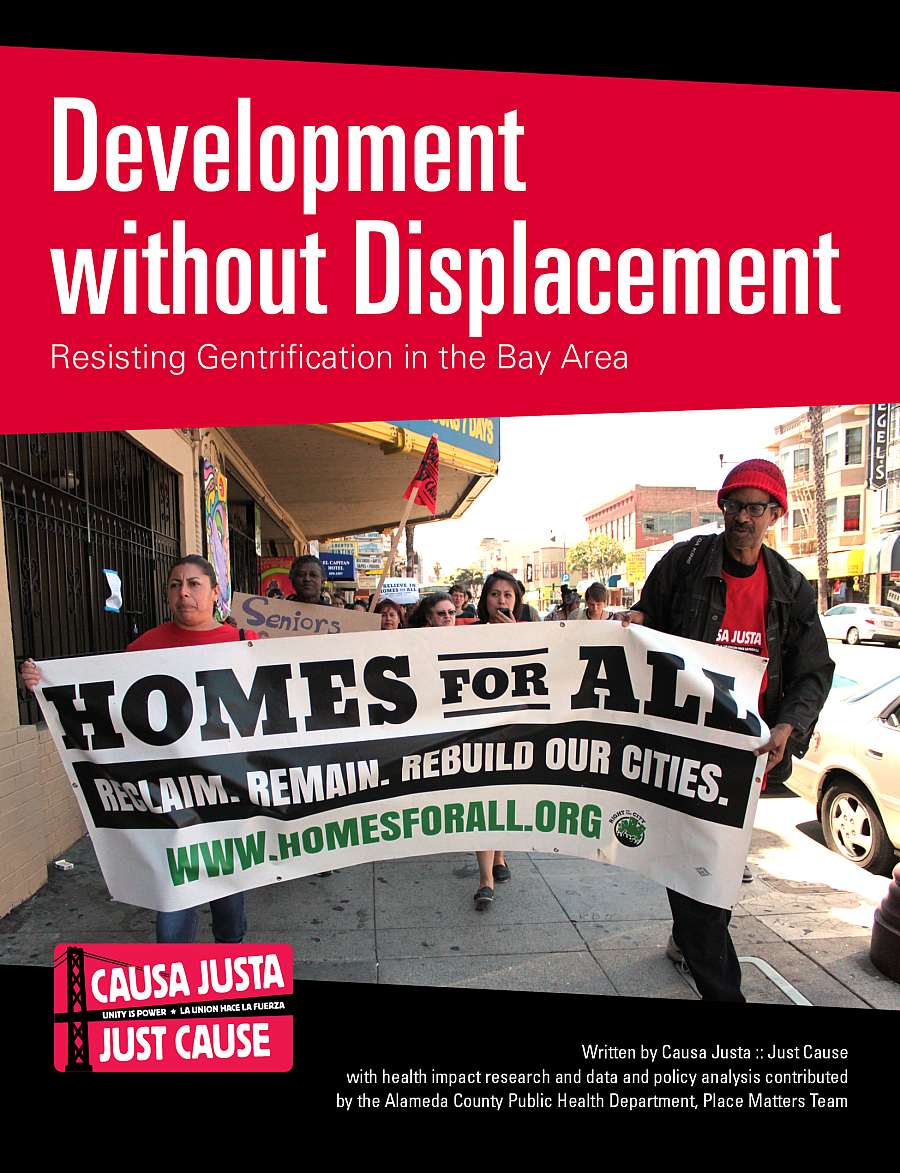Gentrification Is a Public Health Crisis

By Brooke Staton
Spike Lee calls it "the Christopher Columbus Syndrome" – the "discovery" of lower-income, racially diverse urban neighborhoods by a richer, whiter influx of new residents who drive up the cost of housing, squeezing out working-class folks, and transforming the neighborhood.
The debate over gentrification rages among academics, cultural critics, and of course, to those of us who find ourselves living it. (I'm a twenty-something who has recently moved to the San Francisco Bay Area, gentrification ground zero.)
But what about the perspective of the people being displaced? In a new report, Causa Justa :: Just Cause provides much-needed insight from the perspective of the residents of Bay Area communities most heavily impacted, providing vivid evidence that gentrification is not just an amoral process of change but a public health problem – as sociologist John Joe Hickman says, "the most pressing issue as we become an urban world."
The report – Development Without Displacement: Resisting Gentrification in the Bay Area – defines gentrification as:
a profit-driven race and class remake of urban, working class communities of color that have suffered from a history of disinvestment and abandonment. This process is driven by private developers, landlords, business, and corporations and supported by the state, through both policies that facilitate the process and funding in the form of public subsidies. Gentrification happens in areas where commercial and residential land is cheap relative to other areas in the city and region, and where the potential to turn a profit, either through re-purposing existing structures or building new ones is great.
The pace and scope of gentrification in the Bay Area is alarming. Causa Justa :: Just Cause's analysis shows that there are no remaining neighborhoods in Oakland that are not already gentrifying, susceptible to gentrifying, or already wealthy. Working-class communities of color in San Francisco are in a similar position, especially in the Mission District, where no-fault evictions are at the highest levels since the dot-com boom of the early 2000s.
Displacement has been linked with a myriad of stressors, including financial hardship, disruption of social networks, loss of access to health services, even homelessness. Stress, in turn, is linked with poorer health outcomes. The fact that gentrification literally makes residents of displaced communities sick is not an inevitable effect of morally neutral market forces, but a fundamental injustice.
But gentrification is not inevitable. The report provides specific policy recommendations that can prevent displacement from beginning and halt its progress in areas where it is already occurring. Health impact assessments can help local governments and public health officials to promote economic development without displacement. Causa Justa :: Just Cause says the key factor in turning the tide is honoring the voices of communities as partners in development and planning processes that affect their future. Only then will current residents stand to benefit from the renewed wave of investment coming to the neighborhoods they call home.

